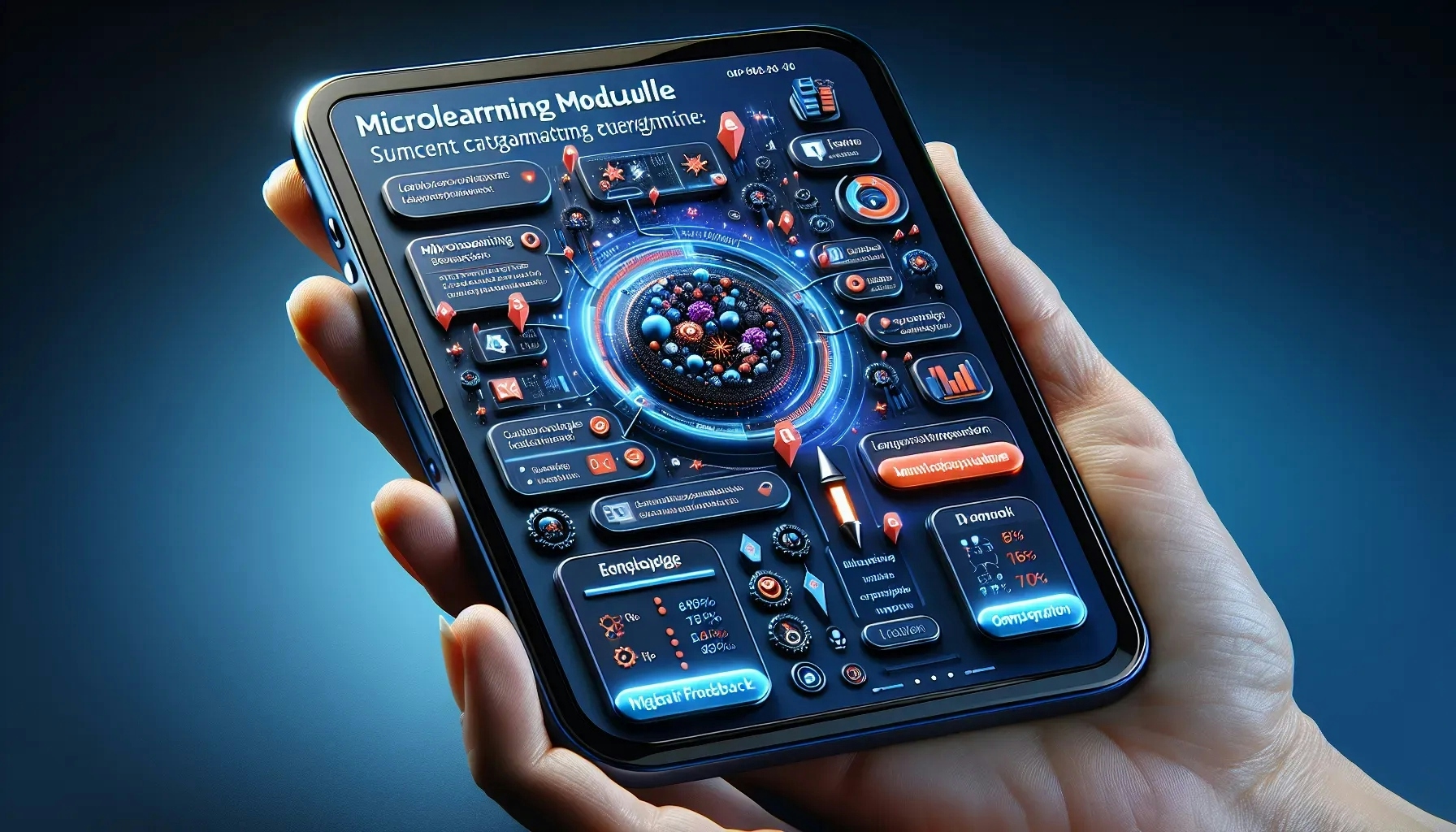What Are Effective Microlearning Modules Developed by Educational Technologists?
From the practical to the playful, professionals in the field of education have shared examples of microlearning modules they've crafted, starting with a Learning and Development Manager's onboarding scenarios. Alongside these expert insights, we've gathered additional answers that highlight the diverse approaches to microlearning and their impact on learners. From the use of gamification to the implementation of spaced repetition with digital flashcards, discover a spectrum of strategies that have successfully captivated and educated audiences.
- Onboarding with Relatable Scenarios
- Dance Combos Encourage Improvisation
- Interactive Quizzes Boost Engagement
- Infographics Simplify Complex Concepts
- Podcast Snippets for Auditory Learning
- Gamification Adds Competitive Fun
- Spaced Repetition with Digital Flashcards
Onboarding with Relatable Scenarios
One notable microlearning module that I developed was a crucial component of the onboarding process tailored for specialists without a professional background in the company's primary product—online payment solutions. Recognizing the challenge of grasping the intricacies of such a specialized topic, we developed a solution in the form of bite-sized microlearning modules. Each module focused on presenting a relatable scenario, such as 'Your friend has decided to start a business in Japan but faces difficulties in receiving payments from abroad,' illustrating how the company assists entrepreneurs in this particular aspect. This approach made complex financial concepts accessible and engaging. The feedback from the target audience was overwhelmingly positive, with colleagues who lacked prior knowledge of financial terms expressing their ability to comprehend, relate to, and derive a positive learning experience from the clear and relatable content.

Dance Combos Encourage Improvisation
Over my 10+ years of teaching salsa, bachata, and kizomba, I've found that short, focused combinations are the best way to help students of all levels grasp the fundamentals. Rather than choreographing long, complex routines set to specific songs—which can overwhelm new dancers—I create modular combos that can be mixed and matched. My goal is to empower improvisation and musicality.
I liken my microlearning modules to verb conjugation drills in language classes. You must first understand the basic building blocks before eloquently expressing yourself through dance. My 5-10 minute combos teach foundational footwork, weight changes, and lead-follow connections. Students enjoy the quick wins and flexibility these provide. I've received incredibly positive feedback on this teaching style over the years.
By stacking simplistic modules together, students gain confidence to let loose, get creative, and interpret songs however moves them in the moment. My newcomers often remark how they thought salsa was rigid and tricky, when really it's an outlet for freedom once you grasp a few key moves. I take pride in unveiling that mindset shift. My returning students especially appreciate how my ever-evolving combinations prevent routines from becoming stale. The possibilities are endless when you view dance as a vocabulary rather than choreography.

Interactive Quizzes Boost Engagement
Interactive quizzes are a dynamic tool developed for microlearning platforms, aimed to captivate learners' attention and boost memory retention. By fostering an immersive environment, these quizzes enable students to actively engage with the content rather than simply passively consuming information. The immediate feedback provided allows learners to instantly gauge their understanding and consolidate their knowledge.
This method keeps the motivation high as learners see a direct correlation between their interactions and their learning progress. Educators and creators should consider integrating such quizzes into their modules to stimulate learner engagement and enhance the overall educational experience.
Infographics Simplify Complex Concepts
Infographics are a powerful resource for distilling complex information into clear and concise visual representations that are both appealing and informative. The strength of infographics lies in their ability to communicate ideas more effectively than text-heavy explanations can. Through a combination of images, charts, and minimal text, infographics aid learners in grasping difficult concepts quickly by presenting them in a visual context.
This aspect of microlearning caters to visual learners and is key for summarizing dense material. Content creators should leverage infographics to break down intricate subjects into easily digestible visual pieces for an improved learning journey.
Podcast Snippets for Auditory Learning
Podcast snippets present a unique approach within the microlearning sphere, catering to those who prefer auditory learning methods. By offering bite-sized audio clips, educators can reinforce lessons and provide additional insights in a format that is accessible for on-the-go learning. These snippets can be a highly effective way for learners to reinforce their knowledge retention or to delve into supplementary material without overwhelming them with lengthy lectures.
Such auditory components can give learners the flexibility to study in diverse environments, such as during a commute. Designers of learning experiences are encouraged to incorporate podcast snippets to enrich their learning modules and to support varied learning styles.
Gamification Adds Competitive Fun
Gamified challenges within microlearning modules serve to stimulate and maintain the interest of learners through interactive and enjoyable elements. The gamification of education involves incorporating game design elements such as scoring systems, levels, and rewards into the learning process. This approach to learning bolsters active participation and can often turn a mundane subject into an engaging adventure.
The competitive edge added by leaderboards and achievements can further incentivize learners to tackle challenges with enthusiasm. To cultivate a spirited learning environment, educational technologists should embrace gamification elements within their microlearning strategies.
Spaced Repetition with Digital Flashcards
Flashcards have been transformed in the digital age into an effective microlearning tactic, utilizing the method of spaced repetition to enhance long-term retention of information. Digital flashcards enable learners to review and memorize data at intervals, which is scientifically proven to embed information more deeply into one's memory. This technique reinforces the learning material by requesting the learner to recall information repeatedly over increasing intervals.
It serves as a simple yet potent tool, particularly for memorizing vocabulary, definitions, or any data-heavy subjects. Instructors and technologists are advised to incorporate spaced repetition flashcards into their educational programs for efficient learning outcomes.

